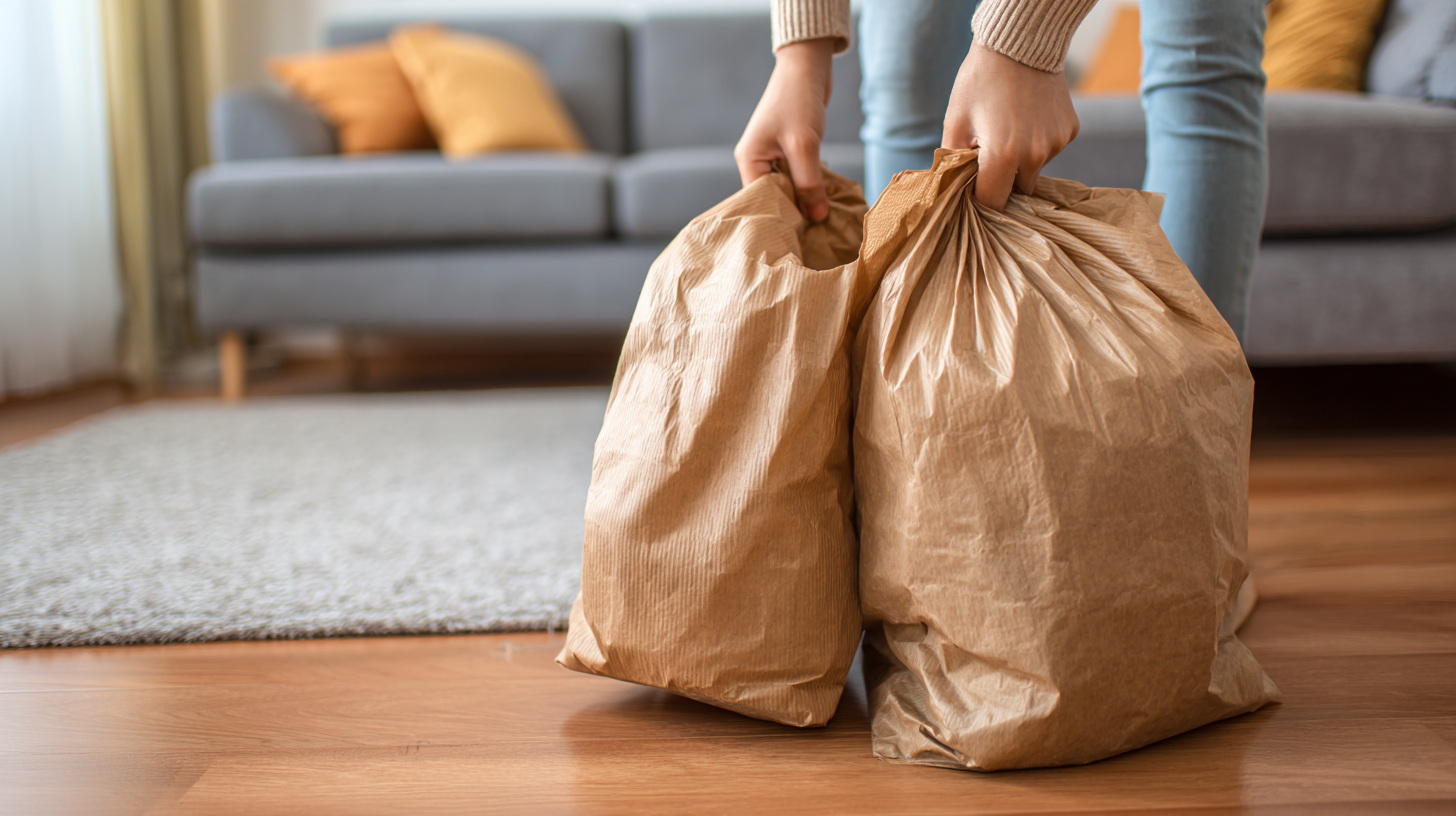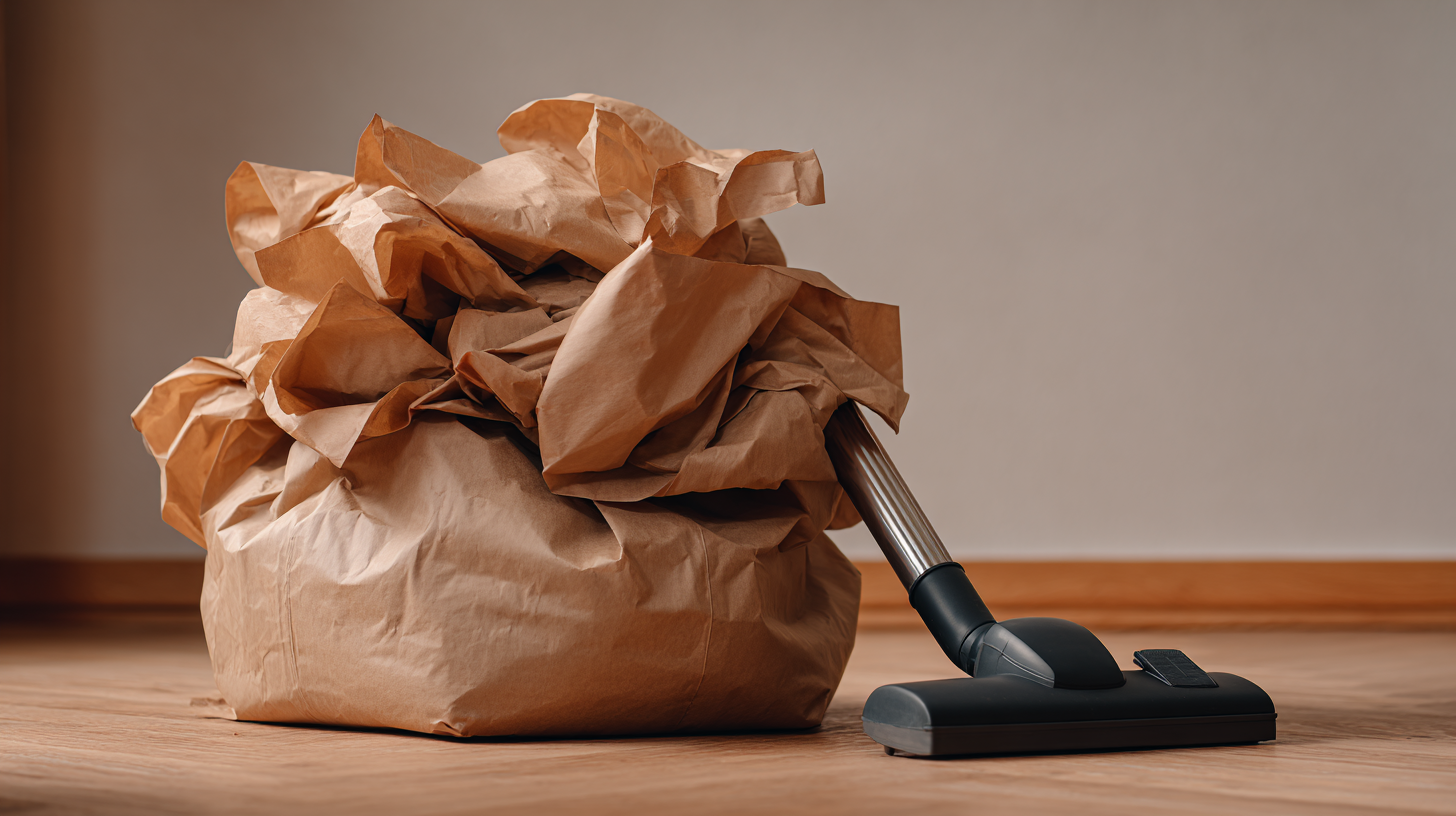 As households increasingly prioritize
sustainability and eco-friendly cleaning solutions, the demand for innovative products is on the rise. According to a recent study by Grand View Research, the global green cleaning products market is expected to reach
$11.3 billion by 2025, reflecting a growing consumer preference for environmentally responsible alternatives. In this context, Paper Vacuum Bags have emerged as a frontrunner in the home cleaning industry, offering
biodegradable and recyclable options that cater to both health-conscious and environmentally aware consumers. Furthermore, with advancements in technology and consumer education, the integration of
smart features within vacuum systems is predicted to enhance the efficiency and convenience of using Paper Vacuum Bags. This blog will explore the critical factors to consider when selecting the best Paper Vacuum Bags, analyzing their
potential impact on future home cleaning trends as we approach 2025.
As households increasingly prioritize
sustainability and eco-friendly cleaning solutions, the demand for innovative products is on the rise. According to a recent study by Grand View Research, the global green cleaning products market is expected to reach
$11.3 billion by 2025, reflecting a growing consumer preference for environmentally responsible alternatives. In this context, Paper Vacuum Bags have emerged as a frontrunner in the home cleaning industry, offering
biodegradable and recyclable options that cater to both health-conscious and environmentally aware consumers. Furthermore, with advancements in technology and consumer education, the integration of
smart features within vacuum systems is predicted to enhance the efficiency and convenience of using Paper Vacuum Bags. This blog will explore the critical factors to consider when selecting the best Paper Vacuum Bags, analyzing their
potential impact on future home cleaning trends as we approach 2025.
The evolution of vacuum bag technology has been remarkable, reflecting broader trends in environmental sustainability and user convenience. Initially, traditional paper vacuum bags were used widely, but advancements in materials and design have led to significant improvements in efficiency and performance. In recent years, innovations such as HEPA filtration have emerged, enabling vacuum bags to capture even the tiniest dust particles and allergens. This evolution not only enhances indoor air quality but also aligns with growing consumer awareness about health and cleanliness.
Looking forward to 2025, the future of vacuum bag technology is poised for further transformation. The integration of smart technology is on the horizon, with potential features like sensors that indicate when a bag needs to be changed or when it's reaching maximum capacity. Additionally, the focus on biodegradable and recyclable materials is set to rise, catering to eco-conscious consumers who prioritize sustainability in their cleaning routines. As trends shift towards more efficient and environmentally friendly solutions, vacuum bags will likely become a pivotal element in home cleaning practices, adapting to the needs of modern households while minimizing ecological impact.
When selecting paper vacuum bags for the future cleaning trends in 2025, it's essential to focus on several key features that enhance usability and effectiveness. Firstly, consider the bag's filtration capabilities. Advanced paper vacuum bags are now designed with multi-layer filters that not only capture dust and dirt but also allergens and pollutants, ensuring a healthier home environment. Look for bags labeled as HEPA-compatible, as these are essential for reducing airborne particles and providing superior air quality.
Another crucial feature to examine is the durability and strength of the bags. In 2025, the demand for sustainable household products will continue to rise, making it vital to choose paper vacuum bags that are sturdy enough to handle various debris without tearing. Reinforced seams and high-quality material will ensure that the bags can withstand rigorous cleaning while remaining eco-friendly. Additionally, consider compatibility with your vacuum cleaner model; many brands are now offering versatile bags that fit various machines, simplifying the cleaning process and enhancing convenience for users.
When it comes to vacuum bags, paper options are gaining traction as we look towards future home cleaning trends. One of the main advantages of paper vacuum bags is their eco-friendliness; they are biodegradable and often made from recycled materials. This makes them a sustainable choice for homeowners concerned about their environmental footprint. Additionally, paper bags tend to trap dust and allergens effectively, providing a healthier indoor air quality – a significant plus for those with allergies or respiratory conditions.
However, paper vacuum bags come with their own set of disadvantages when compared to other types like plastic or HEPA bags. For instance, paper bags may not be as durable and can tear more easily, especially when dealing with sharp debris. They also have a limited capacity for dust and dirt, meaning they may need to be replaced more frequently than their plastic counterparts. On the other hand, while plastic bags are often more robust and can hold more dirt, they can contribute to landfill waste and do little for those seeking a greener cleaning solution. Balancing these pros and cons is crucial for homeowners looking to choose the best vacuum bags for their cleaning needs in 2025.
When considering the future of home cleaning solutions, particularly in the context of paper vacuum bags, sustainability emerges as a crucial factor. With the increasing global emphasis on reducing pollution and resource consumption, innovations in bio-based polymers and natural fibers are becoming pivotal. Reports indicate that the adoption of sustainable materials in the vacuum cleaner accessory market is expected to grow significantly, driven by rising consumer awareness regarding indoor air quality and environmental responsibility. According to a recent analysis, the vacuum cleaner filter market is projected to expand steadily at a compound annual growth rate (CAGR) of over 5% from 2025 to 2035, highlighting the growing demand for eco-friendly options.
Furthermore, the decarbonization of the pulp and paper industry presents a unique opportunity to develop more sustainable paper vacuum bags. Research shows that modern techniques, including advanced bio-fabrication methods, have the potential to mitigate the environmental impacts associated with traditional production processes significantly. Companies are now exploring the integration of nonwoven materials that are not only disposable but also increasingly sustainable, reflecting a shift towards products that align with consumer preferences for environmentally responsible options. As we approach 2025, the landscape of cleaning products will likely be dominated by innovations that harmonize efficiency with sustainability, setting a new standard for home care solutions.

 When it comes to selecting the right vacuum bags for your home cleaning needs, it's essential to consider various factors to ensure efficiency and effectiveness. One key tip is to pay attention to the type of material used in the vacuum bags. Paper vacuum bags are an excellent choice for households with allergies, as they effectively trap dust and allergens while allowing for easy disposal. Always look for bags with a multi-layer filtration system to maximize dirt retention and minimize exposure to allergens.
When it comes to selecting the right vacuum bags for your home cleaning needs, it's essential to consider various factors to ensure efficiency and effectiveness. One key tip is to pay attention to the type of material used in the vacuum bags. Paper vacuum bags are an excellent choice for households with allergies, as they effectively trap dust and allergens while allowing for easy disposal. Always look for bags with a multi-layer filtration system to maximize dirt retention and minimize exposure to allergens.
Another important factor to consider is the compatibility of the vacuum bags with your specific model. Different vacuums use different types of bags, so checking your vacuum's specifications before purchasing is crucial. Look for bags that have been specially designed for your model, as this will ensure optimal performance and prevent issues such as clogging or loss of suction.
Lastly, consider the size and capacity of the bags. Larger bags may be more suitable for bigger households or homes with pets, as they can hold more debris before needing to be replaced. In contrast, if you live in a smaller space, opting for compact bags can save you both storage space and cost. By keeping these expert tips in mind, you can select the best vacuum bags suited to your cleaning needs, paving the way for a cleaner home in the years to come.
